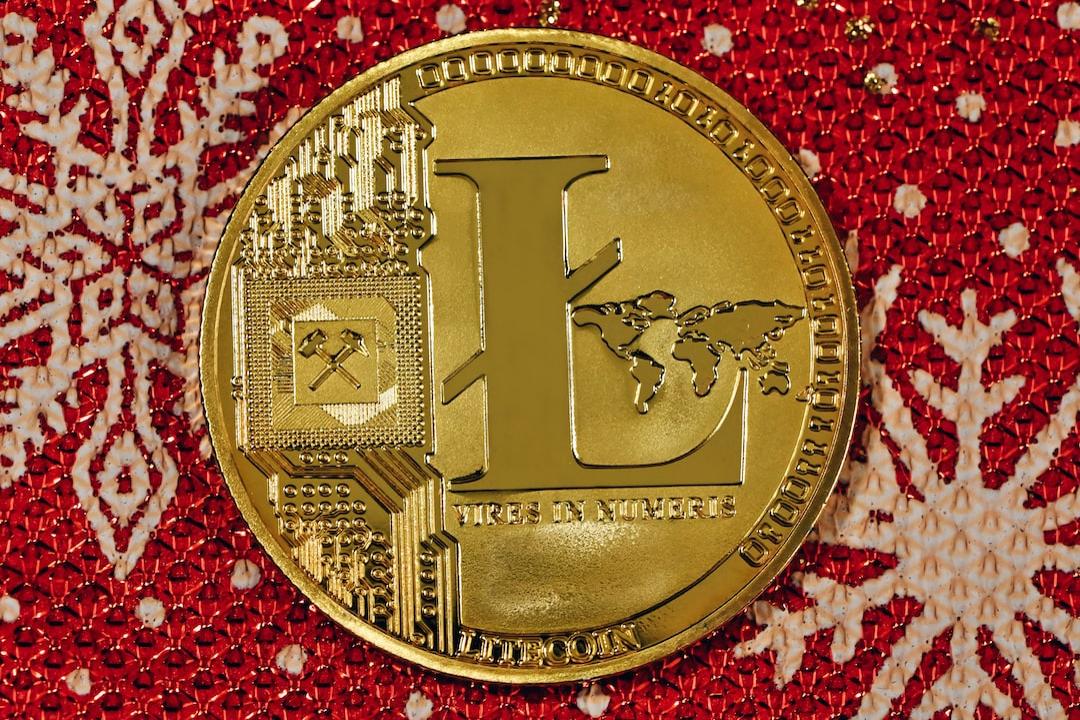“New launches (part 1) – private capture, phantom pricing”
Author: Cobie
Translator: Zombit
Hello, friends. It’s been a while since I returned to Substack, the content publishing platform, and now I want to discuss the current hot topic of new token launches.
Specifically, this article will focus on the misconceptions surrounding new tokens in the market, which are often described as having “low circulation, high FDV (fully diluted valuation).”
Although I initially planned for this to be a three-part series, given my inability to be concise, it might end up being just two parts. Let’s wait and see.
Before we begin, if you find yourself confused about the content I discuss in this article, it may be helpful to read my previous article from 2021, titled “Misconceptions about Market Cap and Unlocking,” authored by Cobie.
As always, please remember that I am not a financial advisor. I am a biased and flawed individual who is past their prime and struggling to understand the world. I am indeed involved in the cryptocurrency industry, which means my intelligence might not even reach double digits. I try not to talk too much about the tokens I own, but I may reveal that in the article.
By the way, have you heard that RoaringKitty is back and has released like fifty cool Avengers edits? Well, back to the point.

When I wrote that article three years ago, I thought it might be the last time I wrote about circulation, FDV, and market cap games. Perhaps I was too naive, hoping that market participants would have a deeper understanding of these important dynamics. Instead, they ultimately chose these new tokens as the “best long-term hold” and cited “no unlocking within a year” as a good reason to buy, along with other highlights of new tokens like brand-new charts with no historical data and focused attention.
What’s worse is that other market participants have indeed gained a deeper understanding of these dynamics. Teams, exchanges, market makers, and financiers have all adapted to these market mechanisms and often use them to their advantage, gaining huge benefits.
Therefore, in my view, most newly launched tokens are now practically uninvestable in the market. Market participants have an extremely immature understanding of these issues, and they spend their time blaming the symptoms of the problem.
In this series of articles, I will explore some of the issues in the current new launch market and discuss why I choose to completely avoid new token launches unless you know what you’re doing and can conduct proper research and analysis.
Table of Contents
Toggle
Most of the upside of new tokens is now privately captured
The downsides of ICOs
The benefits of ICOs
Shifting towards private funding
The frenzy of 2021
Private market captures value
High FDV partly attributed to natural market demand
Price after the crisis
Low circulation itself is not the problem
When this “private pricing discovery” happens in a manipulated market, the resulting valuation is deceptive
Choose to exit
Buying inflated FDV is your choice – you can choose to exit, and you should exit
Conclusion
In modern times, the “price discovery” of assets almost entirely occurs outside the market and is even priced before token issuance. Moreover, many such price discoveries have actually been overestimated due to the dynamics of the private market.
Looking back, by 2024, people will once again be longing for ICOs. It’s hard not to agree with them when you see the difference in opportunities between then and now: in some ways, the ICO era seemed fairer than the current market dynamics.
Before being misunderstood, I think it’s necessary to emphasize the actual drawbacks of ICOs. It’s easy to look back at successful ICOs, but there were hundreds of ICOs that simply drained eight-digit funds and then disappeared or slowly bled investors dry. (Also, I’m ignoring the fact that ICOs were likely illegal in most major jurisdictions.)
Retail investors wasted hundreds of millions of dollars funding impractical, bad ideas that only managed to raise funds because of the ICO frenzy. Even successful projects ended up losing money for investors. Many successful businesses are now worthless tokens, and investors ended up with tokens that ultimately became worth zero, while the companies obtained cash for their business without dilution and, after a while, shrugged off the existence of the tokens.
(This even happened in the Binance ICO – investors invested $15 million to build Binance but did not get the upside of Binance equity. Of course, I’m sure nobody complained about buying the Binance ICO because the price at the time was $0.15 per BNB, and it was one of the best-performing ICOs ever. So, yeah.)
Alright, so ICOs were bad, we get it. But they also had their good side. And expressing the reasons for their goodness is much easier.
Ethereum raised $16 million in its ICO, selling about 83% of its supply (60 million ETH) at a price of $0.31 per ETH.
This put the effective valuation of the public token sale at around $26 million (mining and staking issuance made it slightly more complicated, but roughly that).
Buyers in the ETH ICO achieved approximately a 10,000x return in USD (roughly 70x return in BTC) at today’s prices.
If you missed the ETH ICO, the cheapest ETH you could buy on the market was around $0.433 in October 2015, only about 1.5 times higher than the public sale price. At the time, Ethereum had a valuation of approximately $35 million.
While the $26 million valuation of Ethereum is nearly impossible to find in today’s cryptocurrency investments, even for a VIP seed round of an early-stage conceptual idea, the key point here is that “price discovery and upside” were open to all participants.
From a $26 million valuation to a $350 million price discovery in the market, it happened publicly, and regular people could participate. No KOL rounds, no unlocking and vesting plans, and the returns from buying at the cheapest market price didn’t differ much from buying in the ICO.
After global regulators cracked down on ICOs, cryptocurrency issuers stopped raising funds from the public and turned to private funding from venture capital.
It would be interesting to compare Solana’s initial funding round with Ethereum’s ICO:
Solana raised approximately $3.2 million in this funding round in 2018, selling around 15% of its supply at a price of $0.04 per SOL. This was an effective valuation of around $20 million, similar to the ETH ICO valuation.
Buyers in Solana’s seed round achieved approximately a 4,000x return in USD (potentially slightly higher due to staking rewards).
If you couldn’t get into the limited funding rounds, the cheapest SOL price you could buy on the market was around $0.50 in May 2020 – about 12 times higher than the seed round.
Buying at the cheapest market price brought about a return of approximately 300x. At the time, Solana had a valuation of around $240 million, with a circulation of less than 5%. Solana maintained low circulation for only 10 months – they went from having a tiny circulation to almost fully unlocked and had a massive cliff unlock in January 2021.
The initial rounds were privileged and allowed investors to effectively capture a 10x increase in Solana’s price (from $0.04 to $0.50).
(Solana also had some other privileged/private funding rounds, at approximately $0.20, as well as a limited public token sale on CoinList, which I believe was around $0.20 as well.)
Solana launched in 2020, essentially near the lows of BTC and ETH prices after the COVID crash. Their massive unlock coincided with the timing of a wave of new users being introduced to the crypto space. The success of this pattern on various tokens, as well as the phenomenon of “unlocking looking up,” resulted in significantly higher private market valuations.
ETH and SOL both had initial sale valuations of around $20 million. By 2021, seed rounds of new projects became highly competitive, with large VCs often engaged in bidding wars. Seed round prices reached hundreds of millions of dollars.
(I remember the first time someone pitched me a $100 million seed round. I passed out of disgust. The project ended up opening at $4 billion FDV, and I missed out on a 40x return. Learning from my mistake, I bought the next $100 million seed round. But it failed and almost went to zero, and it’s now inactive.)
While private market valuations soared, in the circulating market, cryptocurrency traders claimed “FDV is a meme,” and all the charts were basically green candles shooting to the sky.
Axie Infinity had a valuation of approximately $50 billion, despite only about 20% of the tokens being in circulation. FileCoin’s FDV reached around $475 billion, but the market cap was $12 billion. The increasing supply of high FDV tokens was overshadowed by the massive wave of new entrants.
As fully diluted valuations reach larger numbers, venture capitalists are increasingly willing to pay more for private rounds – “if this project is worth $15 billion in the market, then bidding $300 million for the next seed round is acceptable, missing it is a bigger risk!”
Founders, of course, are willing to accept these deals – they can raise more funds and sell fewer tokens. Previously, they needed to sell 10% at a $20 million valuation to raise $2 million. Now, they can sell 1% to raise $2 million and keep additional token supply for incentives, the community, or themselves.
If a reputable VC funded a promising project at a $100 million valuation, many less reputable VCs would try to follow them. If the last funding round for a project was at $1 billion, these unfounded followers would attempt to lead the next round for $3-5 billion as soon as possible. Being slightly worse in entry doesn’t matter much to them; these things will reach a valuation of several billion dollars anyway.
Founders can easily accept these deals. It raises their personal wealth “waterline” without relying on market forces and brings new team players to help their product succeed. Of course, most of these team players eventually prove to be negative, but founders haven’t realized that yet.
Through this pattern, over time, more parts of the value and price discovery have been privately captured.
If we take the examples of Ethereum and Solana and compare them to projects launched in recent years, it would be interesting. I would choose two comparable projects: Optimism and Starknet.
Consider the following metrics: initial sale valuation, lowest valuation in the market, circulation at the time, and returns in the market versus private.
ETH ICO valuation: $26 million
Lowest market valuation of ETH: $350 million FDV
Date of lowest market valuation: October 2015
Circulation at the time: 100% supply on the market – $35 million market cap
Returns from public sale: 10,000x
Returns from the market: 7,500x
SOL seed round valuation: $20 million
Lowest market valuation of SOL: $240 million FDV
Date of lowest market valuation: May 2020
Circulation at the time: 2% supply on the market – $4.8 billion market cap
Returns from seed round: 4,000x
Returns from the market: 300x

